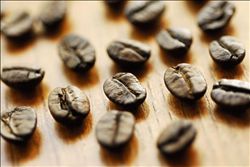Introduction and development history of mocha coffee beans
Development History Editor
Mocha is named after the famous Mocha Harbor. In the fifteenth century, East Africa was very underdeveloped in transportation, but it produced the world's most precious coffee beans, which were collected at Mocha Port in Yemen and shipped to Europe. Today, Mocha Harbor
Mocha Coffee Making Method Photos
Mocha Coffee Making Method Photos (11 photos)
Mocha has been relegated inland due to the accumulation of silt, and new ports, including Mombasa and Durban, have replaced the status of Mocha Port, but the origin of Mocha coffee in Mocha Port period has still been preserved, and the coffee beans produced in these areas are still called Mocha coffee beans.
Mocha beans are so popular because of their rich taste. Red wine aromas, wild aromas, dried fruit aromas, blueberries, grapes, cinnamon, tobacco, sweet spices, logs, even chocolate. Europeans love mocha coffee and have long regarded it as an expendable luxury.
With the birth of Italian fancy coffee, people tried to add chocolate to regular coffee instead of mocha coffee, which is now often drunk fancy mocha. Italian fancy mocha coffee is made by mixing 1/3 of Italian espresso Espresso with 2/3 of hot milk and then adding chocolate ingredients. Traditional Italian fancy mocha coffee uses chocolate syrup as an ingredient, but since mocha coffee has become popular, more home-made mocha coffee uses chocolate syrup instead of chocolate powder. In addition to dark chocolate, milk chocolate can also be used as an ingredient in today's mocha coffee. Unlike cappuccino's thick milk foam, mocha tops don't have milk foam, replaced by whipped cream, and cocoa powder and cinnamon are added. Preserved fruit is also used as a garnish for mocha coffee placed on top.
Therefore, the so-called mocha coffee is actually a general term for mocha bean coffee and fancy mocha coffee. When tasting mocha coffee, you must pay attention to this point, so as not to order coffee that is not the mocha coffee in mind.

Important Notice :
前街咖啡 FrontStreet Coffee has moved to new addredd:
FrontStreet Coffee Address: 315,Donghua East Road,GuangZhou
Tel:020 38364473
- Prev

Tanzania coffee beans introduction, coffee origin characteristics
Tanzania's coffee industry has always been dominated by estate cultivation, but now more than 85% is grown by smallholders. Many small farmers have organized themselves into cooperative organizations, the most important of which is the Kilimanjaro Cooperative Union (KNCU). Tanzanian coffee was auctioned off by the Tanzania Coffee Management Board due to political instability.
- Next

Introduction of coffee bean producing areas in Indonesia
Half of Sumatra's Mantenin beans are washed beans and the other half are air-dried beans. Raw beans are so ugly that many novice coffee roasters misunderstand their appearance and think they have been cheated. But when Mantenin coffee beans are roasted, especially after deep roasting, their appearance is rich and round, with a strong texture, and the coffee oil on the surface is not.
Related
- Does Rose Summer choose Blue, Green or Red? Detailed explanation of Rose Summer Coffee plots and Classification in Panamanian Jade Manor
- What is the difference between the origin, producing area, processing plant, cooperative and manor of coffee beans?
- How fine does the espresso powder fit? how to grind the espresso?
- Sca coffee roasting degree color card coffee roasting degree 8 roasting color values what do you mean?
- The practice of lattes: how to make lattes at home
- Introduction to Indonesian Fine Coffee beans-- Java Coffee producing area of Indonesian Arabica Coffee
- How much will the flavor of light and medium roasted rose summer be expressed? What baking level is rose summer suitable for?
- Introduction to the characteristics of washing, sun-drying or wet-planing coffee commonly used in Mantenin, Indonesia
- Price characteristics of Arabica Coffee Bean Starbucks introduction to Manning Coffee Bean Taste producing area Variety Manor
- What is the authentic Yega flavor? What are the flavor characteristics of the really excellent Yejasuffi coffee beans?

